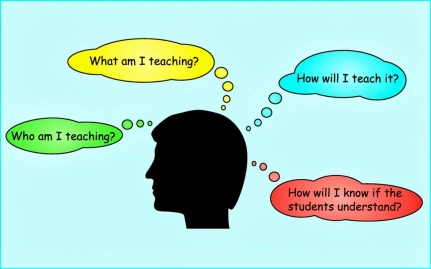
The course goals of Accomplished Teaching were…
- Examine and implement effective planning/preparation, instruction and assessment strategies from Domains 1 and 3 of the Danielson Framework to maximize student learning.
- Analyze the impact of instruction on student learning through personal and collaborative reflection on 1) written lesson plans, 2) videotaped segments of instruction/learning, and 3) student work.
- Practice the fundamentals of individual, partner, and small group reflective practice to promote continuous learning. (Domain 4 of Danielson Framework: Professional Responsibilities)

Individual and collaborative reflective practices are critical components of effective teaching. At the beginning of this course, I thought about how I was reflective in my teaching practice. Through my recent National Board certification process, I reflected on my practice individually, as well as in groups within my cohort. Through videotaping and analyzing my lessons, I was better able to see where I was successful in a lesson and also where I could improve in the future. Through the process of obtaining my National Boards in literacy, I was also able to build up my skills in my current content area of reading intervention (Danielson 1a, 4a, 4e). Another way that I have been reflective in my teaching practice is through our building Data Teams process. I work with my team to look at student assessment data, analyze effective and ineffective teaching strategies, and design lessons to maximize student understanding and learning growth (Danielson 1e, 3e, 4a, 4d). I also reflect and make adjustments during and directly after a lesson. If I see that students are struggling with a concept or that something is hindering a student’s clear understanding of the lesson, I will either make adjustments at that moment, or will change things up for the next day. I take into account the struggles that my students are having and come up with a strategy or strategies that I think will be most effective in helping them understand and get the most out of the lesson (Danielson 3c, 3e, 4a). As a Safety Net (reading and math intervention) teacher, I consistently team up with different grade level teachers to learn more about the students I’m working with, share assessment data, and communicate back and forth on student progress and teaching strategies that might work best for those students (Danielson 1b, 4a, 4d, 4e). Continuously reflecting on my teaching practices, both individually and with others, helps me to become a more effective teacher.
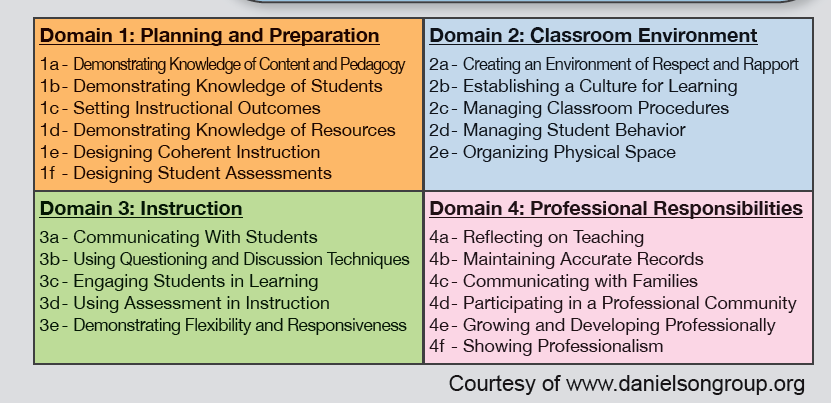
Throughout this course we have gone much deeper into learning about what it means to reflect. We analyzed the Danielson Framework and how it can be a guide for us in our reflective practices. The Danielson model is a research-based teacher evaluation framework. Studies have shown that students who made high levels of growth had teachers who exhibited or used certain instructional techniques and strategies. These high quality teacher attributes and best practices were combined together to create the Danielson Framework. This model is a very thorough evaluation tool that can be used by schools to help determine teachers’ strengths and weaknesses. It can be used to weed out less effective teachers and to help guide principals in creating positive changes within their staff. The domains and their subsets can be used as springboards for staff development, teacher improvement, and goal setting. The framework also helps to create a more uniform and equitable evaluation system, so all principals in a district are using the same criteria for assessment. The framework is an excellent guideline for teachers to use to see where their current teaching practice falls and what they can do to improve their skills.
To be a reflective educator we must be committed to our own continual professional development. A reflective educator also stays focused on student learning and development as their top priorities. In addition, reflection requires drawing on our past experiences, but also being willing to listen and take into account different ideas and perspectives in order to learn and build up the tools in our educational toolboxes. This quote from the book shows how challenging, yet rewarding being a reflective teacher can be… “Significant learning generally involves fluctuating episodes of anxiety-producing self-scrutiny and energy-inducing leaps forward in ability and understanding” (Brookfield, 1992, p. 12).

There are many things that can impede the process of reflection. It is oftentimes hard to challenge our current beliefs and biases. We get stuck in our ways and in our ideas. In order to be reflective, we must be open to looking at alternative theories and suggestions. We must be open-minded. If we are reflecting with a partner or in a group, sometimes it can be hard to stay focused and listen. Oftentimes, we want to jump in with our own ideas, when we should be listening and processing what the others are saying. Reflective practices can also fail when the topic is not personally meaningful or relevant to those involved. If there is a lack of trust, people will be unwilling to share their thoughts and ideas. Lack of trust is a huge barrier to reflection.
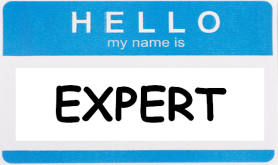
During this course, we also analyzed what it means to be an accomplished teacher. Through individual reflection I came up with the following list of the attributes of an accomplished teacher.
- Uses formative and summative assessment
- Asks higher level questions
- Has high expectations
- Involves parents
- Instills a love of learning
- Uses research based strategies
- Includes students by sharing learning goals, rubrics, and success criteria
- Gives students feedback
- Is guided by Common Core standards
- Is a team player with other staff
- Is reflective with self and others
- Finds opportunities for improvement and learning
- Is a good listener
- Encourages and motivates students
- Instruction is data driven
- Differentiates instruction
- Scaffolds instruction (I do – We do – You do)
- Knowledgeable about resources
- Good communication skills
- Coaches students individually and in small groups
- Teaches students that they are responsible for their own learning
- Encourages active student participation
- Excellent classroom management and systems and routines
- Positive attitude
- Uses a variety of media and teaching resources
- Adaptable and flexible
- Inspires students
- Compassionate
- Capitalizes on teachable moments and student interests
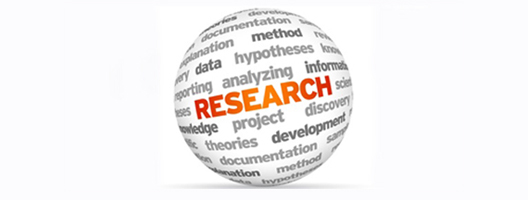
In Module 5 of Accomplished Teaching, we researched articles that illustrated an aspect of accomplished teaching. We also read other students’ articles, as well. The article that I chose was, Mindsets – How to Motivate Students (and Yourself) (2013). Reading this article helped me to understand how to cultivate a growth mindset within myself and with my students. Someone with a fixed mindset believes that intelligence is innate and static. Someone with a growth mindset feels that skills and abilities can be learned. The article shares ways to teach your students to develop a growth mindset. It talks about different types of praise and what works best for developing a growth mindset. It also discusses how we need to change our thinking about frustration and confusion during learning and that it is part of the process of building skills and learning. It also discusses the importance of giving students feedback and what that feedback should look like.
What I learned throughout this course is that an accomplished teacher takes time to reflect individually about her own practice. It is hard to carve out this time in an already over-packed week, but it is very important to fit in time to process your teaching and your students’ learning. After doing this, you can decide to make changes in your instruction or to remember which strategies were particularly effective. In addition, it is important to reflect with other staff members. A PCC team is a great avenue to share ideas and reflect with a team of educators. The PCC team uses formative and summative assessments to drive instruction. The team also focuses on Common Core standards and discusses the strengths and weaknesses of each student. They discuss differentiated strategies that they feel will improve student learning for all students, whether they are remedial or advanced. An accomplished teacher takes the time to listen to other teachers’ ideas and takes a look at multiple perspectives. She encourages others to share and offers a non-judgmental atmosphere for reflection and teamwork.

An accomplished teacher is always striving to better herself and her practice. She attends classes, seminars, and trainings and shares her learning with her colleagues. An accomplished teacher always keeps students and their learning as the top priority and encourages others to do the same. We need to remember that we don’t know everything, we are always learning and improving, and that we and our colleagues have a vast amount of knowledge and experience to share with each other. We also need to remember that learning takes time and we and others will be making many mistakes as we learn. That’s OK! It’s part of learning and we need to give ourselves and others permission to make mistakes and not be perfect.

During this course we also had the opportunity to team up with another student and collaboratively plan lessons that we would teach to our students. As a teacher, this is something that we rarely have time to do in practice, but it was very helpful. Discussing and asking each other questions about our prospective lessons helped us to clarify and reflect on our thinking and planning. After we taught our lessons, we watched each other’s videotaped lessons and reflected on how the lessons progressed. We offered feedback to each other and commented on these new ideas. Teaching is most often an isolating profession, but taking time to work with, or observe another teacher can help us to hone our own craft and also share our ideas with others.
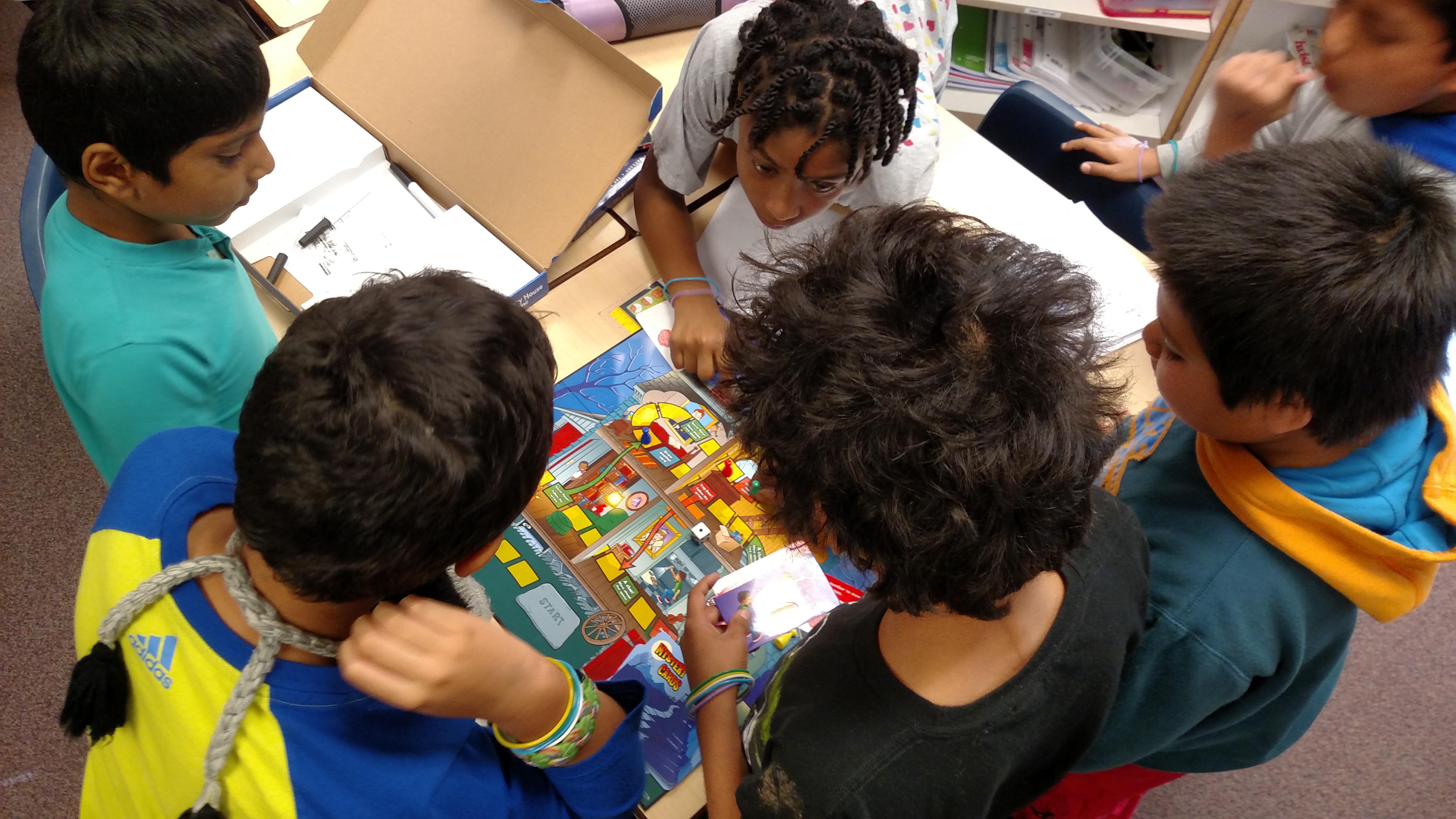
At the end of the course, I researched best practice strategies for teaching multiplication facts. Van de Walle suggests some great strategies to help students master these facts. Two good websites that he recommends are www.fun4thebrain.com, which has fun fact practice games and http://kentuckymathematics.org/pimser_printables.php, which has printables for teaching and practicing math facts (Van de Walle, Karp, & Bay-Williams, 2013). Another effective strategy is using music and rhymes to help students to remember their multiplication facts. “When information is put to rhythm and rhyme these musical elements will provide a hook for recall. Songs, chants, poems, and raps will improve memory of content facts and details through rhyme, rhythm, and melody.” (Brewer, 2012)
I plan to intentionally teach my students the various multiplicative strategies that Van de Walle suggests. I also plan to focus on math fact families instead of clumping them all together at once. I intend to use story problems to help my students to get a real world feel for the patterns among the various facts. I also plan to focus on the commutative property of multiplication so that they see that the number of facts they need to learn will be cut in half. I plan to use YouTube videos with songs and rhymes for the different fact families to help my students internalize the facts in a fun and interactive way. I will incorporate computer games to help my students to master and maintain mastery of the different multiplication facts.
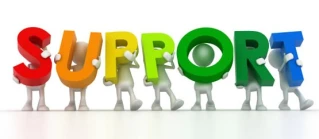
I am supporting my colleagues in our reflective practice by sharing these findings with my fourth grade data team. We are focusing on multiplication for our Professional Growth Goal and in our data team cycles. These strategies and findings will be helpful to all of us in order to help us reach our goals. As we try out these different strategies, we will come back together and reflect on student learning and either adjust our teaching or continue on with additional strategies. In addition to sharing my research paper with my team, I am also sharing all the resources and the YouTube videos that I am finding to help our students learn their facts through rhyme and song. By sharing and reflecting with other teachers, we can improve our teaching and the success of our students (York-Barr, Sommers, Ghere, & Montie, 2006)

Based on everything that I have learned during this quarter in my Accomplished Teaching class, I am much more intentional in my lesson planning and teaching to incorporate the attributes of accomplished teachers. I keep the Danielson Framework in mind throughout my role as a teacher. This year, I have been more intentional about including my students and their parents in the learning process. I have started sending home weekly emails to parents to let them know what we are working on and what the current vocabulary or sight words are, so that they can support their students at home. I have also invited them all to our Safety Net Haiku 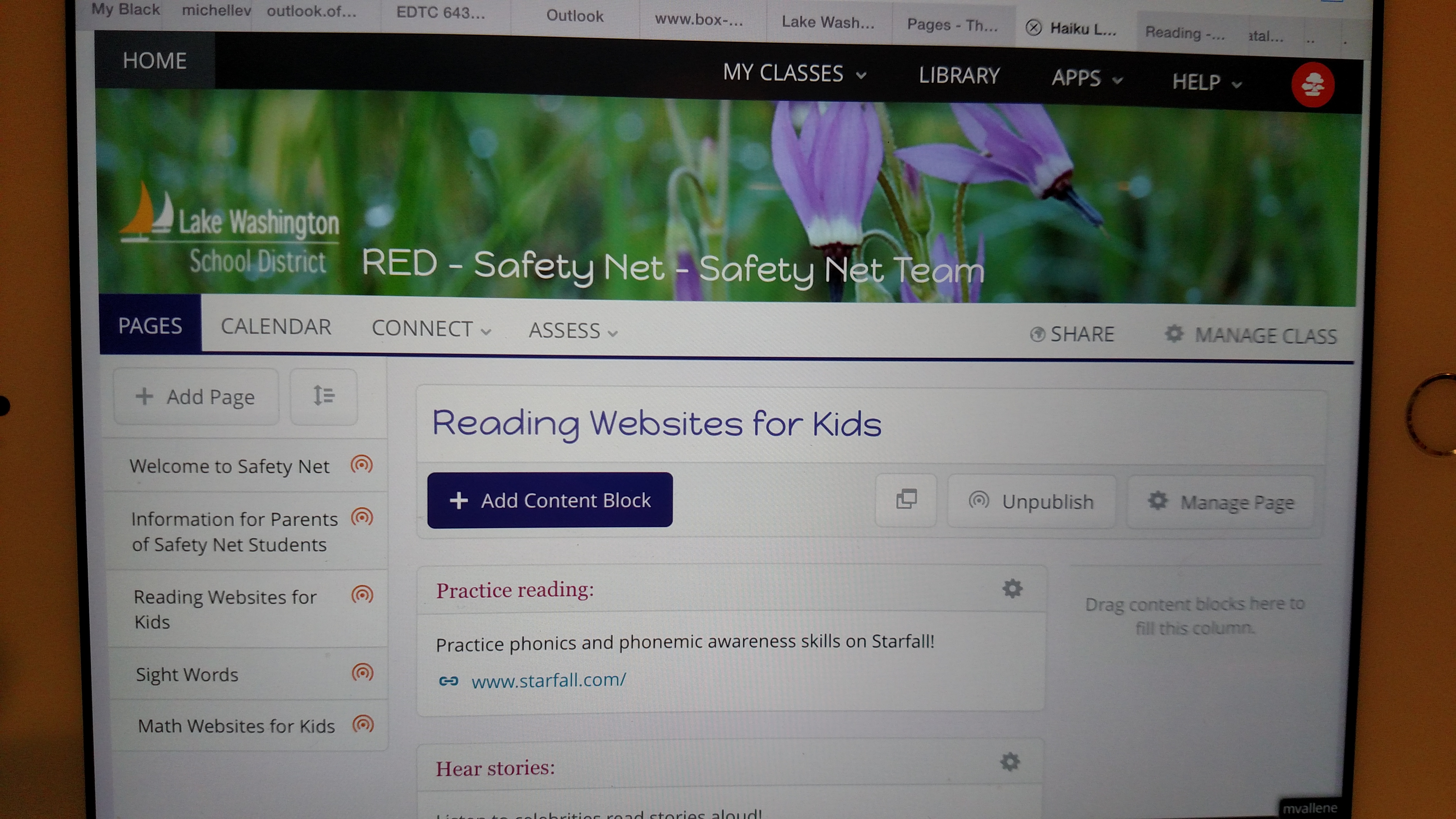 page, which has multiple resources and information on reading and math support. I have made charts for my students so that they can graph their progress and track their learning. I set up accounts for my students on our reading curriculum (Wonders) Adaptive Learning. The students can work on increasing their literacy skills online at home with fun games and activities.
page, which has multiple resources and information on reading and math support. I have made charts for my students so that they can graph their progress and track their learning. I set up accounts for my students on our reading curriculum (Wonders) Adaptive Learning. The students can work on increasing their literacy skills online at home with fun games and activities.

I have also been sharing my learning and the new resources with my colleagues throughout the building and on my PCC data team. In addition, I have been team teaching with one of our fourth grade teachers for daily math instruction. We collaborate and reflect on a daily basis about our teaching and student learning. Based on the learning in this class, I am now more cognizant of what it means to effectively reflect with a partner. I try to listen more, learn from my partner teacher’s strategies and ideas, and give feedback on what I feel is working and what needs to be adjusted. I have also learned to not feel as bad when receiving feedback from others and was reminded that we all make mistakes and that it is a learning process to improve your practice. This was clearly illustrated this past week during one of our math lessons. I was teaching the group and feeling really good about how the lesson was going. I thought that the students were mostly “getting it”. After the lesson, the other teacher and I had time to reflect when the kids went to their specialist class. She told me that the instruction time was too long and that I had lost some of the kids. Wow, that was contrary to what I had been thinking. This group of fourth grade students is a very challenging one. Many of the students don’t feel like they are good at math and have motivation issues. At first, when the teacher had given me her feedback, my mind jumped to a defensive mode. Then I stepped back and thought about what she had said. We discussed it some more and in the future, I will be more thoughtful about keeping my lessons to a shorter time frame. Reflection, both individual and with others is critical to improving teaching practice and becoming a more accomplished teacher.
References
Brookfield, S. (1992). Why can’t I get this right? Myths and realities in facilitating adult learning. Adult learning, 3(6), 12.
York-Barr, J., Sommers, W., Ghere, G., & Montie, J. (2006). Reflective practice to improve schools: An action guide for educators (2nd ed.). Thousand Oaks, CA: Corwin Press.
Mindsets: How to motivate students (and yourself).(2013). Educational Horizons, 91(2), 16-21. Retrieved from http://ezproxy.spu.edu/login?url=http://search.ebscohost.com/login.aspx?direct=true&AuthType=ip&db=eric&AN=EJ999522&site=ehost-live; http://pilambda.org/horizons/mindsets/
Brewer, C. B. (2012). Music and learning: Integrating music in the classroom. Retrieved 11/29, 2015, from http://education.jhu.edu/PD/newhorizons/strategies/topics/Arts%20in%20Education/brewer.htm
Van de Walle, John A., Karp, K. S., & Bay-Williams, J. M. (2013). Reasoning strategies for multiplication and division facts. In K. Villella Canton (Ed.), Elementary and middle school mathematics teaching developmentally (Eighth ed., pp. 181-182, 183, 184, 186) Pearson.